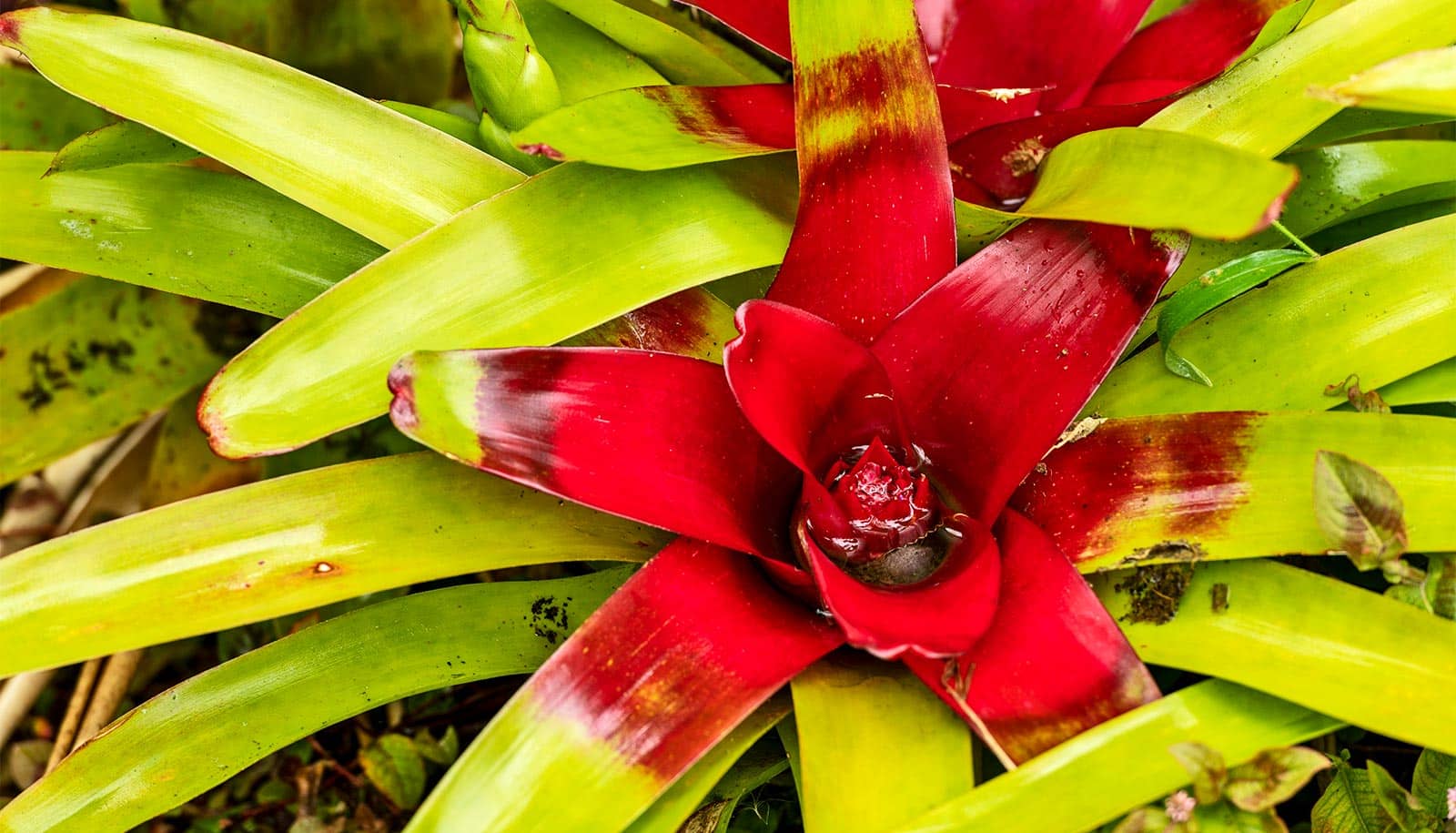A new study shows that a warmer and drier climate will lead to massive losses of tropical plant species.
Brown University biologists set out to better understand the effects of climate change on plant species in tropical mountain regions. They found that even small variations in temperature and moisture can have massive impacts, threatening not only plants that live there, but also the ecosystems they support.
Emily Hollenbeck, who conducted the research while earning her PhD in ecology and evolutionary biology from Brown University, made the discoveries through a series of laborious yet informative experiments conducted in the Monteverde mountain region of Costa Rica.
Hollenbeck is devoted to learning how climate change affects tropical forests and as part of her dissertation work, she spent five years leading research to document the occurrences of plant species called epiphytes on three mountains in Costa Rica and Panama. On one of the mountains, she transplanted plant species among sites that varied in elevation, temperature, and aridity, and then observed and quantified the effects on the plants.
According to the study in Nature Communications, most epiphyte species struggled to survive outside their native ranges in climate conditions even slightly different from what they typically experience. The researchers conclude that their work strengthened earlier conjecture about risks of widespread extinctions from climate change in tropical mountain ecosystems.
“It’s already obvious to people who live here, even those who aren’t biologists, that the natural world has been shifting in striking ways over the last 20 or 30 years in response to climate change,” says Hollenbeck, who is now president of the Monteverde Conservation League, a Costa Rican nonprofit focused on conserving and rehabilitating tropical ecosystems and their biodiversity.
“It felt really important to conduct a very specific, well-controlled scientific study to provide context and evidence to support what we’re seeing.”
While it is widely understood that climate change poses extinction risks for a variety of species, there is limited understanding of these dynamics. That’s especially the case for tropical mountain regions home to some of the world’s most diverse ecosystems, says study coauthor Dov Sax, a Brown professor of ecology, evolution, and organismal biology who served as Hollenbeck’s dissertation advisor.
Sax says that most estimates of extinction risk from climate change are based on correlative, statistical models that consider what sort of climate conditions species currently experience and whether those conditions are likely to be somewhere nearby in the future. While these approaches work well in the United States and Europe where species’ precise geographic distributions are well studied, Sax says they are poorly suited to tropical settings. There, the distributions of most species are often poorly documented, and it is unclear if species can tolerate conditions that differ from those occurring at their current locations.
“The field doesn’t have a good handle on just how bad the extinction risk to tropical organisms might be under different levels of climate change,” Sax says.
The new study directly addresses these limitations for tropical epiphytes in mountains of Costa Rica and Panama, Sax says—and it took an extraordinary amount of work.
Hollenbeck, with the help of research assistants, carefully surveyed the distribution of about 70 species of epiphytes across three mountain ranges. The researchers climbed up and down trees and traversed mountainous terrain to transplant about 1,500 individual epiphytes of 15 different species to a variety of elevations and climatic conditions above and below the elevations where they normally survive. The researchers monitored the plants every three months over the course of three years.
“We found that these species really are as sensitive to small changes in climate conditions as has been widely feared, and which some previous, much smaller-scale experiments had found in the past,” Sax says.
Even the plants with the widest survivable ranges, which were predicted to be the least vulnerable to change, fared worse than the researchers expected.
Additionally, the findings suggest starkly different outcomes from temperature conditions expected by 2100 under different climate change scenarios. Under temperatures associated with low-emission scenarios determined by the Intergovernmental Panel on Climate Change (1.5 degrees Celsius above pre-industrial levels (2.7 degrees Fahrenheit)), most of the plant species studied will survive.
But under emission scenarios that are moderately high (3.2 degrees Celsius above preindustrial levels (5.76 degrees Fahrenheit)), 5% to 36% of the study species may go extinct from all mountains in the region and 10% to 55% of species will disappear from the mountain on which they were studied.
“It is a little alarming just how close to a threshold or tipping point we are for these tropical species,” Sax says, noting that Earth’s surface temperature has already increased 1 degree Celsius (1.8 degrees Fahrenheit) since the pre-industrial era.
“On the one hand, this gives us hope if we really can dramatically slow climate change, but on the other hand it shows just how little additional warming is needed to lead to the massive extinction events that we have feared might occur.”
Sax adds that with a moderate amount of warming, a third of all epiphytes could be lost by the end of the century, which could have far-reaching and unpredictable downstream effects on the ecosystem, and ultimately, the surrounding populations and economy.
Hollenbeck, who lives in Costa Rica teaching science, running research fellowships, and designing curricula for Avenues the World School, says the epiphytes in the tropical forest are like the canaries in a coal mine.
“Getting this level of concrete data involved a stupefying amount of fieldwork over a long time and applies to about 70 species of plants,” she says. “But this research just scratches the surface in terms of how climate change is affecting different species.”
Funding for the research came from the National Science Foundation.
Source: Brown University




















Discussion about this post